By Kent McFarland and Bryan Pfeiffer
October is a month of change. The leaves slip from green to gold. Then, suddenly, they all seem to drift to the ground. The trees are nearly naked once again and ‘stick season’ has arrived. So here’s your field guide to some moments that you might not otherwise notice during these few weeks that feature yellow-brown hills beneath a deep blue sky (with the last Monarchs fluttering southward).
The Last Butterflies?
For the past eight months they have flickered and fluttered among us – tiny flashes of red, orange, yellow and blue floating above hayfields and dancing in flower gardens: Spring Azures, Great Spangled Fritillaries, Red Admirals, Monarchs and more than a hundred other butterfly species here in New England. But soon, when the freeze finally reaches the warmest corners, the show will come to an end. Our last butterfly of the year, probably a Clouded Sulphur somewhere, will flutter no more. Winter will finish off the butterfly season.
Or so we’re told. Even in the deepest, darkest winter night, there among us. Learn more on the VCE blog…
Where Oh Where Are the Snow Geese?
For more than three decades, as autumn leaves blazed and swirled across Vermont, an annual rite of fall was the Champlain Valley “snowstorm.” Snow Geese in migration, more than 10,000 in day, filled the skies and covered fields in a honking glacier of geese. But here’s the fall forecast: the blizzard ain’t happening anymore, at least not like it used to in Vermont.

Highest count of Snow Geese reported to Vermont eBird each week in Addison county from 1990-2000 compared to 2012-2014.
This isn’t to say you won’t find a few thousand Snow Geese at Dead Creek Wildlife Management Area in Addison, Vermont, from now through December. But the predictable, astonishing spectacle of swirling, honking masses of geese is now but a fond memory.
This is a story of success, too much success, wildlife management, and the predilections of a bird smart enough to discover agriculture.
But first, some viewing advice for this year: Recognize that even as Snow Goose numbers rise at Dead Creek, which they will, you may not see them from viewing area on Route 17 in Addison. Thousands of geese can be hidden in a dip in the land to the south. If that’s the case, return to Route 22A, drive about one mile south, then head west on Gage Road to its end. You can sometimes see snow geese from there. Keep your eyes on the Vermont eBird map. Zoom in on a location and see what others have reported by clicking on an observation.
Learn more about the story and how to spot a Ross’ Goose on Bryan’s blog.
Long Live the Queen!
Most of the bumble bees you see flying right now are males (drones) looking for a mate or young queens preparing for winter. Each year in the bumble bee kingdom, only a queen will carry the colony’s torch through winter to produce the next generation. Every other bee – workers, drones, and the old queen – dies with the onset of fall frost.
Not so with the honeybee, with which more people are familiar. In the dead of winter, Kent has often visited the honeybee observation hive at the Montshire Museum of Science, which is made with a pane of glass on each side of a thin box. The workers are all gathered around the queen in one spot. If you put your hand on the glass away from them, the glass is frigid, but the back of your hand on the glass right in the center of the cluster is incredibly warm. Eating stored honey keeps their metabolisms high enough to produce excess heat and keep the cluster alive.
Bumble bees take a completely different approach. They do not put all of their energy into food storage for the winter but hedge their bet on the survival of a few queens. Read more on the VCE blog…
Going Deep
In the spring Spotted and Jefferson’s salamanders crawl to vernal pools — temporary woodland ponds that fill with water but then dry out later in the summer, providing a fishless environment for larval salamanders, where they mate and lay eggs. But for 90% of the year these salamanders are elsewhere in the forest. Sometimes you can find them by flipping over a large stone or rolling a rotting log, but for the most part, they are tough to find.
Technology allowed VCE biologist Steve Faccio to easily spy on a salamander using miniature tags that emit a radio signal. With a radio receiver and small antenna, Steve could then monitor the salamander’s movements and locations.
Standing on a forest path near the site, Steve turned on the radio receiver and tuned to a salamander’s frequency. A faint, but audible “ping” sounded from the headphones. A few minutes later Steve was in the general area of the animal. The signal was strong, but he couldn’t quite pinpoint it. The salamander was underground.
After an hour on hands and knees, Steve found the exact spot. A series of narrow, branching tunnels under the leaf litter and rotting logs held the prize. Steve was able to move just a few leaves and there it was peering out from a tunnel opening.
These salamanders can’t dig. They use shrew, mice and chipmunk tunnels for refuge. In fact, the tunnels are so important to them that Steve could predict areas in the forest that would be used by the salamanders just by the density of mammal tunnels. Without small mammals, there were no salamanders to be found.
After tracking them to these surface tunnels all summer long, suddenly, with the chill of fall, the salamanders changed behavior. They entered more vertical tunnels that led deeper underground. By November nearly all of them were deep under the earth. The radio signal only traveled about two or three feet, so eventually the signals were lost. They had gone deep enough to escape the ground penetrating frost and spying by radio from above.
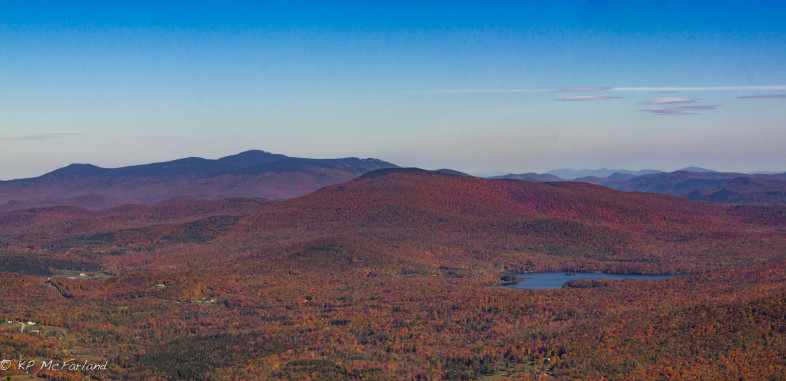
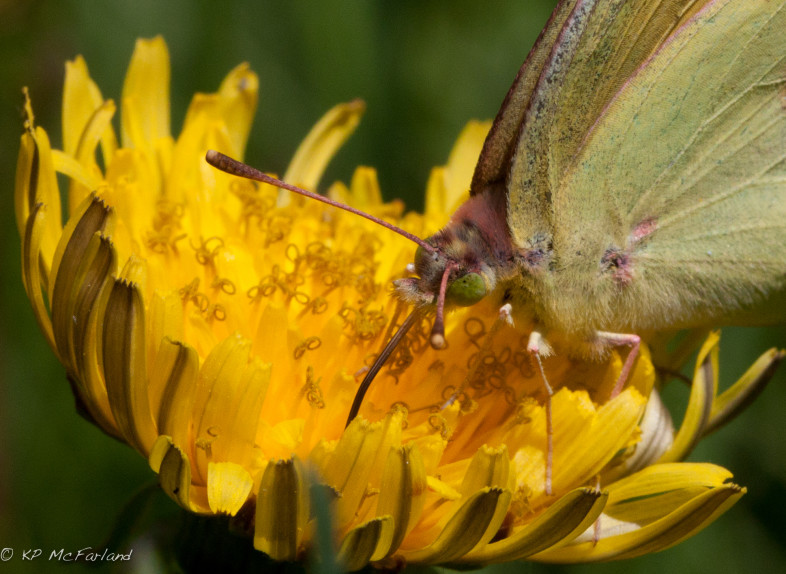
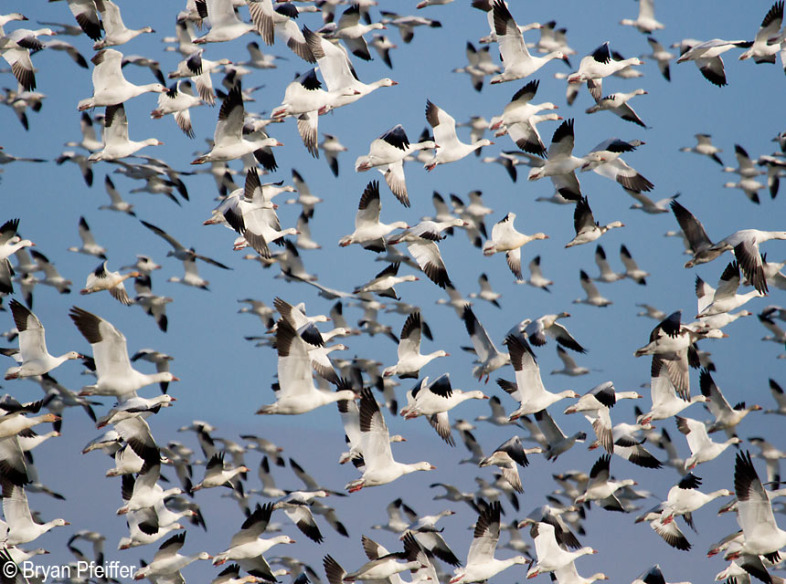
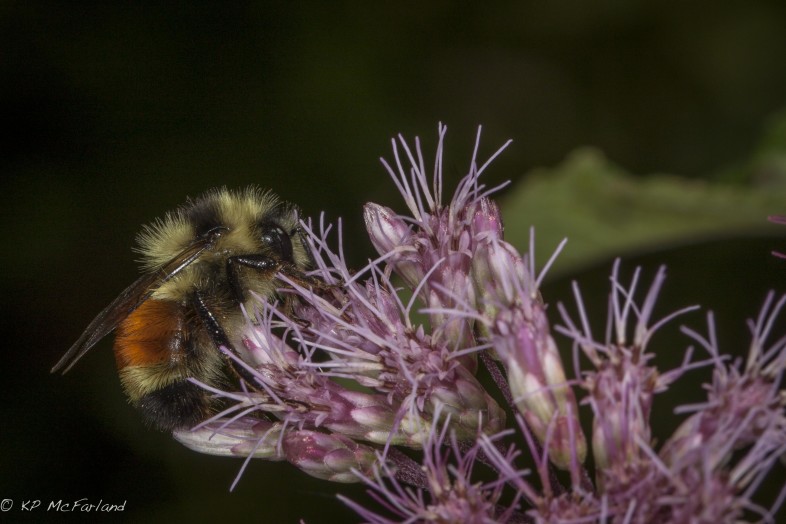
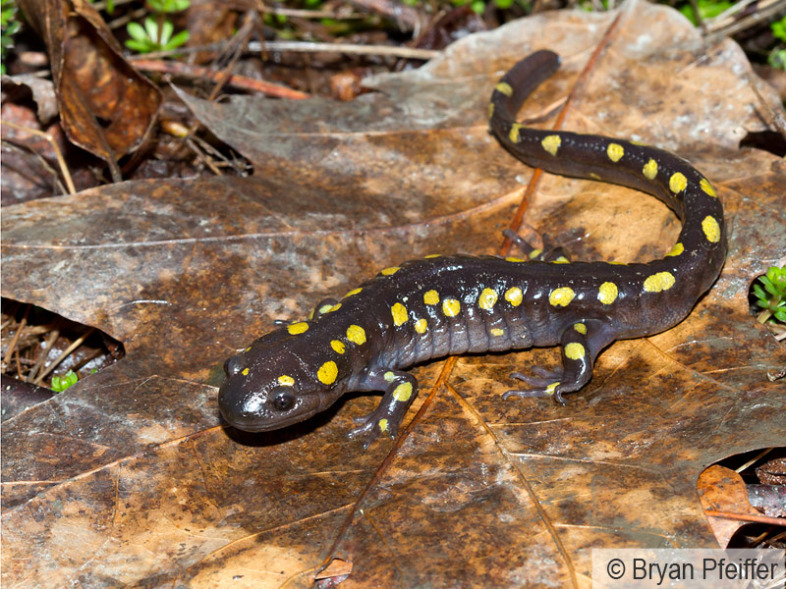

fyi: your link to bryan’s blog can’t be opened. jenn
Seems to work for me. Try it again. Thanks for letting me know.